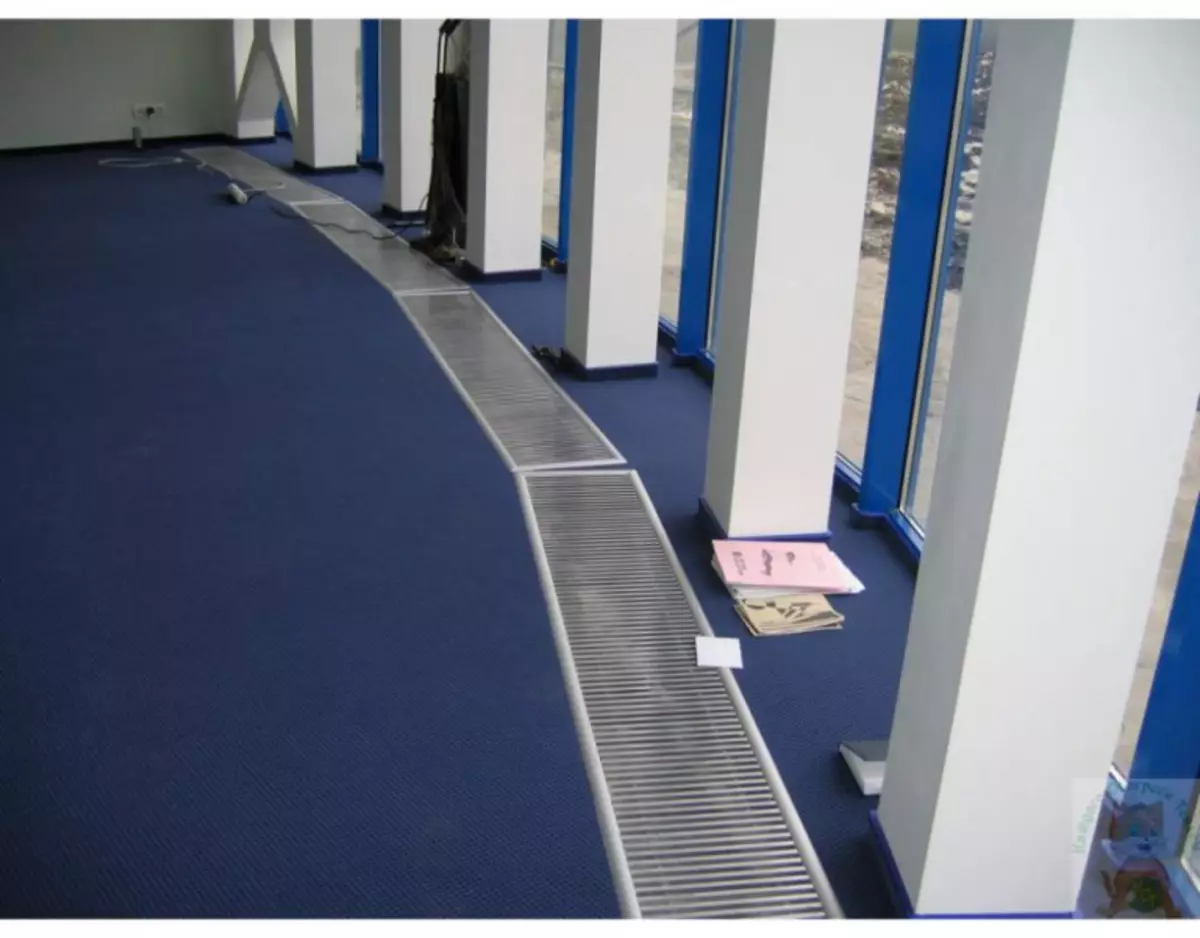
Outdoor radiators are among the technical means that are highlighted, although inherently this is a conventional heating device that is attached to the horizontal surface (in this case to the floor).
Water outdoor heating radiators can be installed on the floor without additional mounting. These can be devices from light metal structures to cast-iron multi-section devices required when arranging heating in premises with panoramic glazing, to create a heat curtain that prevents icing glass.
Design features

The size of the radiator is selected based on the size of the room.
Outdoor heating radiators differ from the rest of the structures that they do not need to fasten. They are installed directly to the floor and in their form are noticeably different from the batteries usual.
These are rectangular instruments, most often wide and low, although copyright design models can be made in any form and look like an old radiator or otherwise.
The housing in which the floor heating radiator is entered into, can be made in any style, the authors decorate them and draw up to their own taste. The material for their manufacture is often served by stainless steel, but sometimes for heating and special design of country cottages, designers create cast iron models equipped with carved legs.
Such devices weigh quite a lot and therefore require high-quality support.
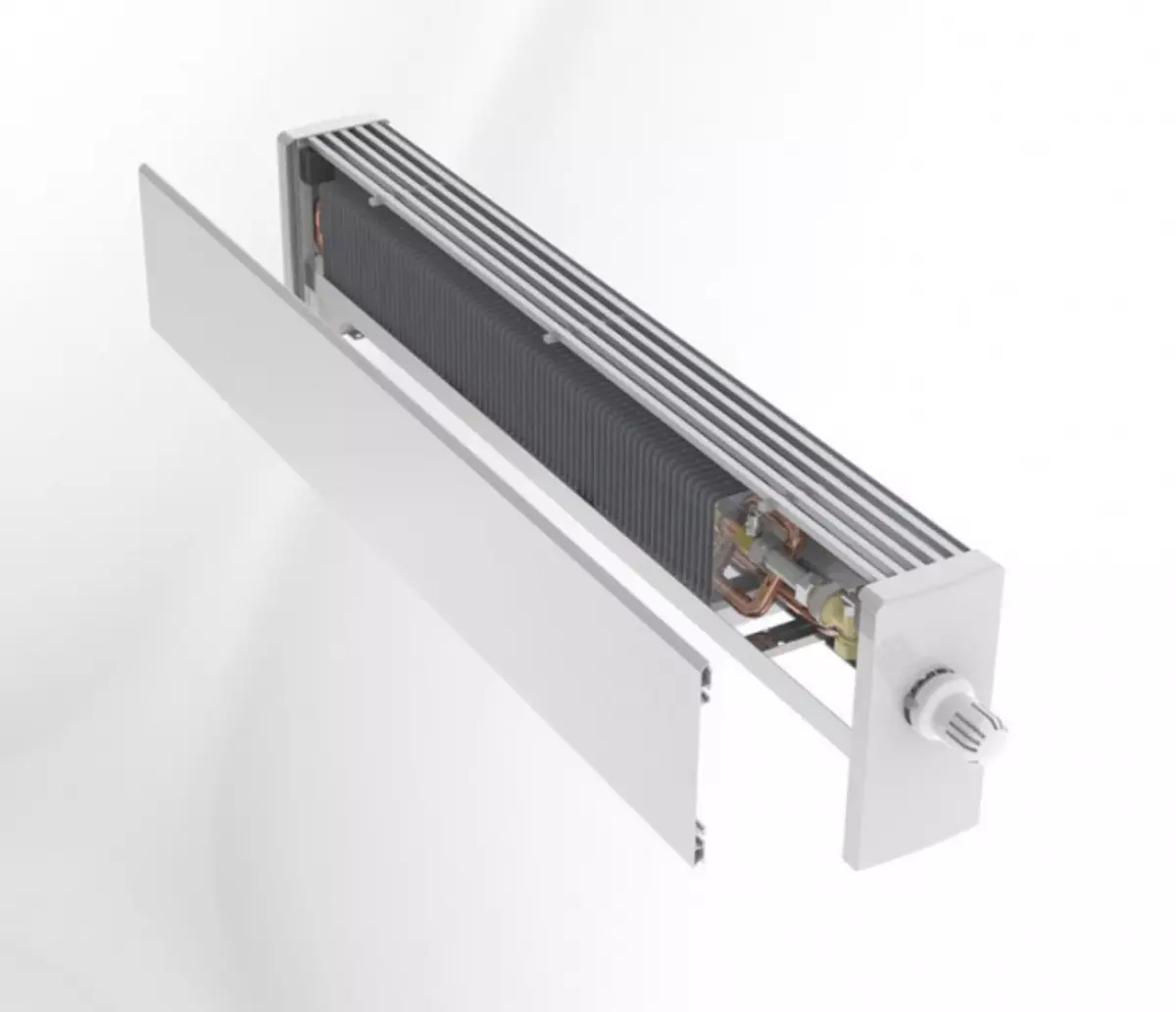
Inner device of an outdoor radiator
Inside the case is hidden heat exchanger made of:
- copper;
- brass;
- Aluminum.
No need to clean, corrosion resistance affected the cost of the product. It is noticeably higher than the price of a conventional heating device, but its value is fully justified by the quality of the product.
There are two types of floor heating devices - these are convectors and radiators, each of which has its own merits, one of which can be called for heating the liquid coolant.
Differences of the convector from the radiator
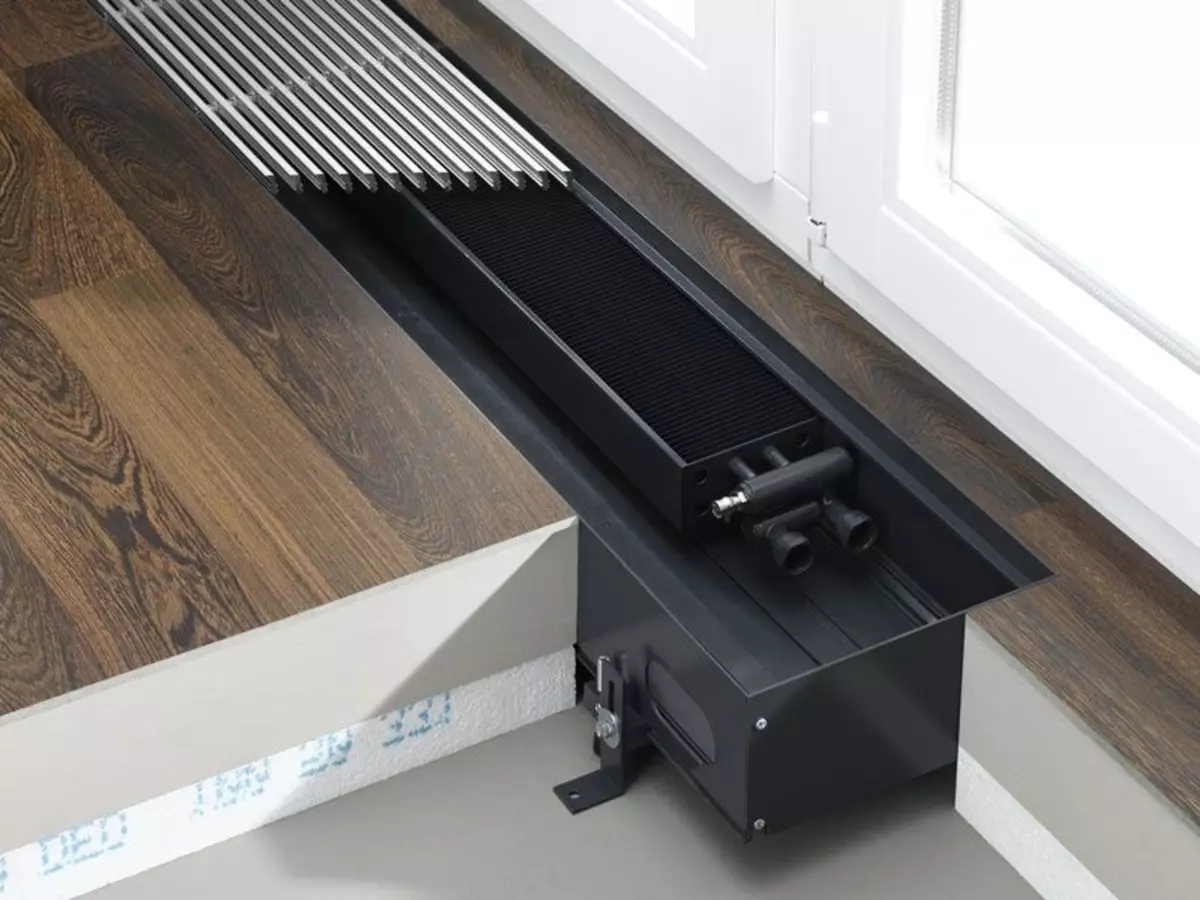
Radiators work on water or antifreeze
Article on the topic: What effectively treat the tree from mold?
The difference lies in the amount of transmitted heat. The convector is capable of transmitting more than 70% of heat, and the radiator is significantly less.
As a coolant and radiators, water or antifreeze are used in convectors.
The selection depends on the characteristics of the material used to create a heating device. The device of each model includes:
- heat exchanger;
- box;
- Decorative grille.
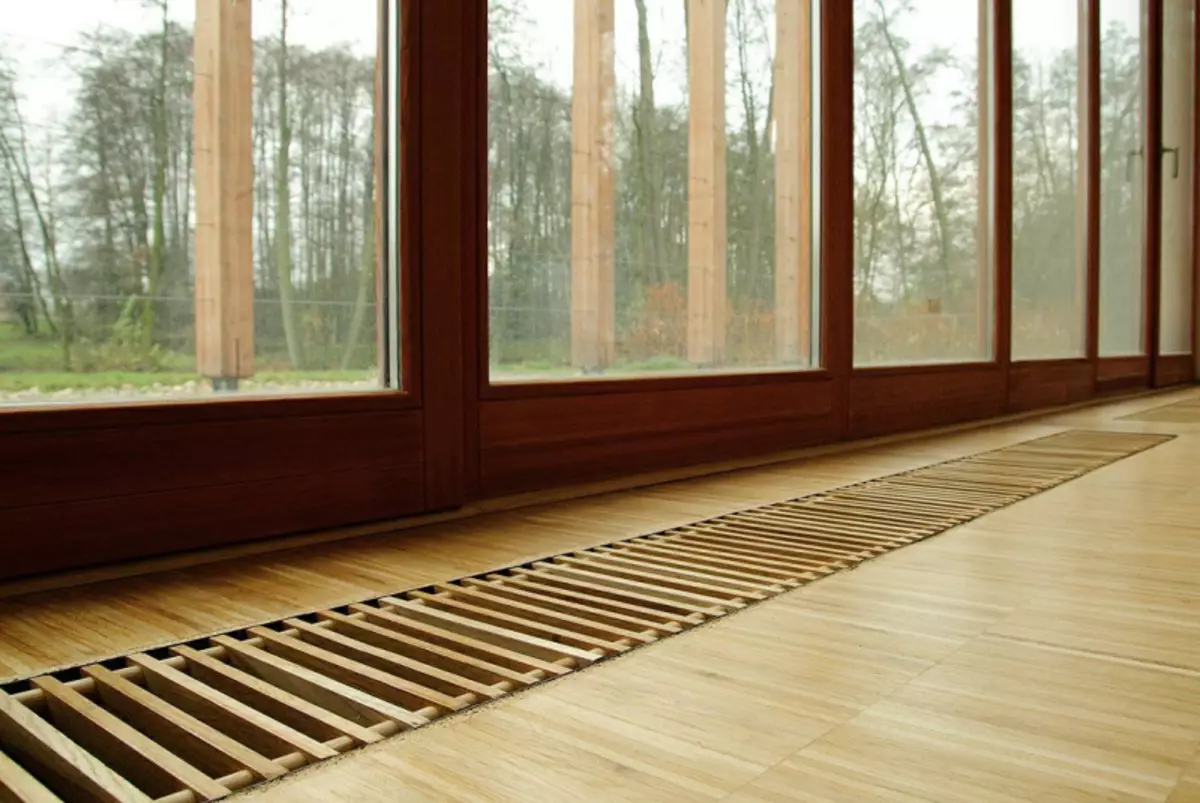
The design feature is the absence of gaps between the heat exchanger and the pipe. This contributes to an increase in the functionality of the device, and to enhance the power in the modified devices, several heat exchangers are installed in one case.
Modern models are equipped with a removable grille and air damper, allowing to control the power of heat transfer. Such compact devices are absolutely fireproof, they do not overcame air indoors, evenly distribute heat, equipped with a thermostat that allows you to adjust the heating temperature.
Outdoor heating batteries are popular due to the fact that they can be used both with autonomous and centralized heating. Moreover, in the autonomous system, the working pressure of the convector reaches 8 atmospheres, and in centralized - 10 atmospheres.
Varieties
For the heating of country houses, cast iron devices are most often used. The peculiarity of the floor radiators from the cast iron is considerable weight and designer design. Designer models are performed in a wide variety of styles and options. This is a palace style, and the model in the style of high-tech, minimalist and "modern". For more information about such radiators, see this video:
The surface of many is covered with a pattern, they are painted into different colors that are fully appropriate to the overall style of the design of the room. Such devices serve not only for heating, but also for decorating space. Especially attractive devices, the pattern on the surface of which is shrouded manually.
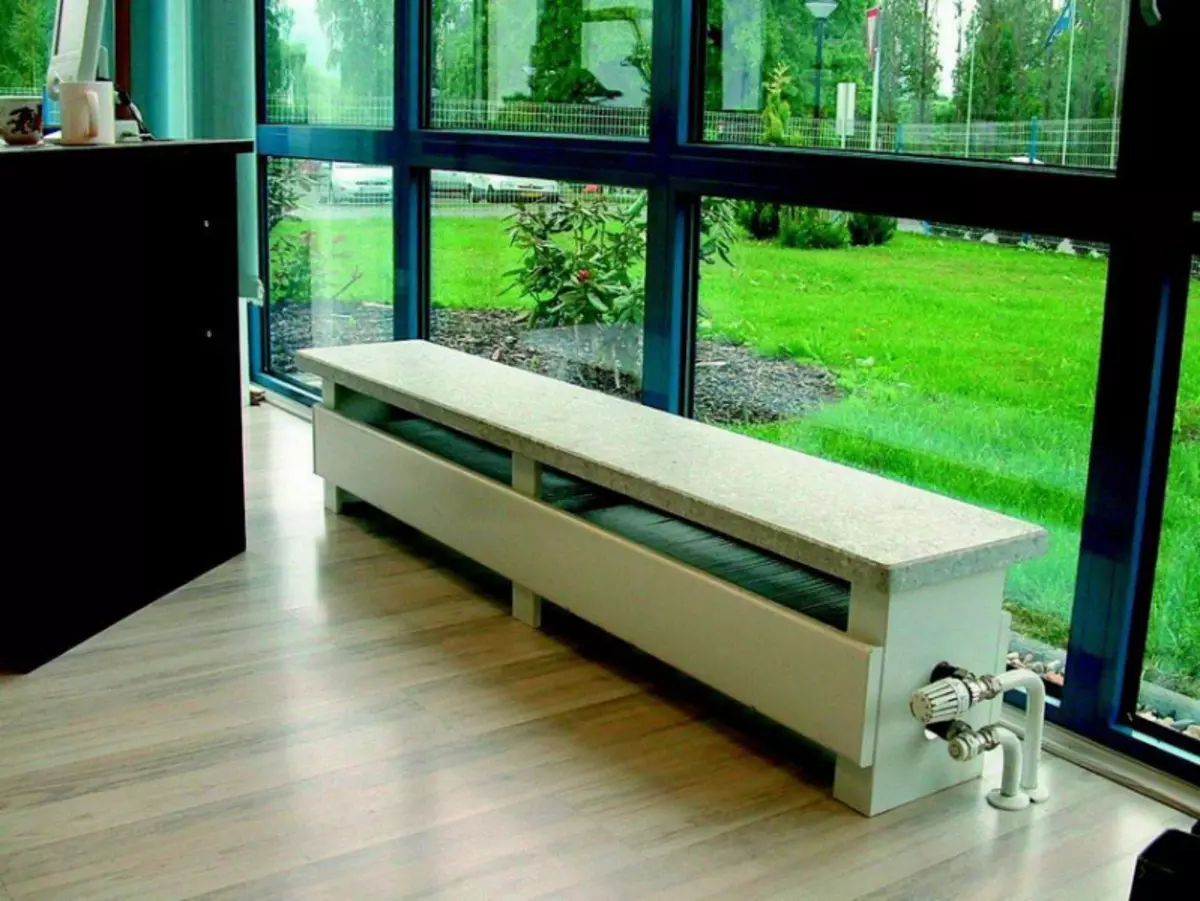
Outdoor radiators warm well
The main distinguishing feature of such radiators is high power. As it is known, the cast iron is well warmed, it retains heat for a long time and gives it perfectly perfectly.
Article on the topic: Septic tank: principle of operation, installation, maintenance
These designs are installed in spacious living rooms and bedrooms, in the cabinets and rooms equipped with a winter garden. Cast iron radiators have long been particularly demand, but today they relate to less demanded models due to quite large value and significant weight.
Bimetallic devices are made of two types of metal. Most often it is a combination of aluminum with copper or steel. Their main distinguishing feature and advantage are that:
- The coolant circulates along a pipe made of copper or stainless steel, which has high corrosion resistance;
- Outdoor fins are made of light and durable aluminum and is distinguished by a large area of the working surface, which is capable of providing high heat returns.
At the heart of the design of an aluminum-copper floor radiator Copper thick-walled tube, characterized by a high level of thermal conductivity.
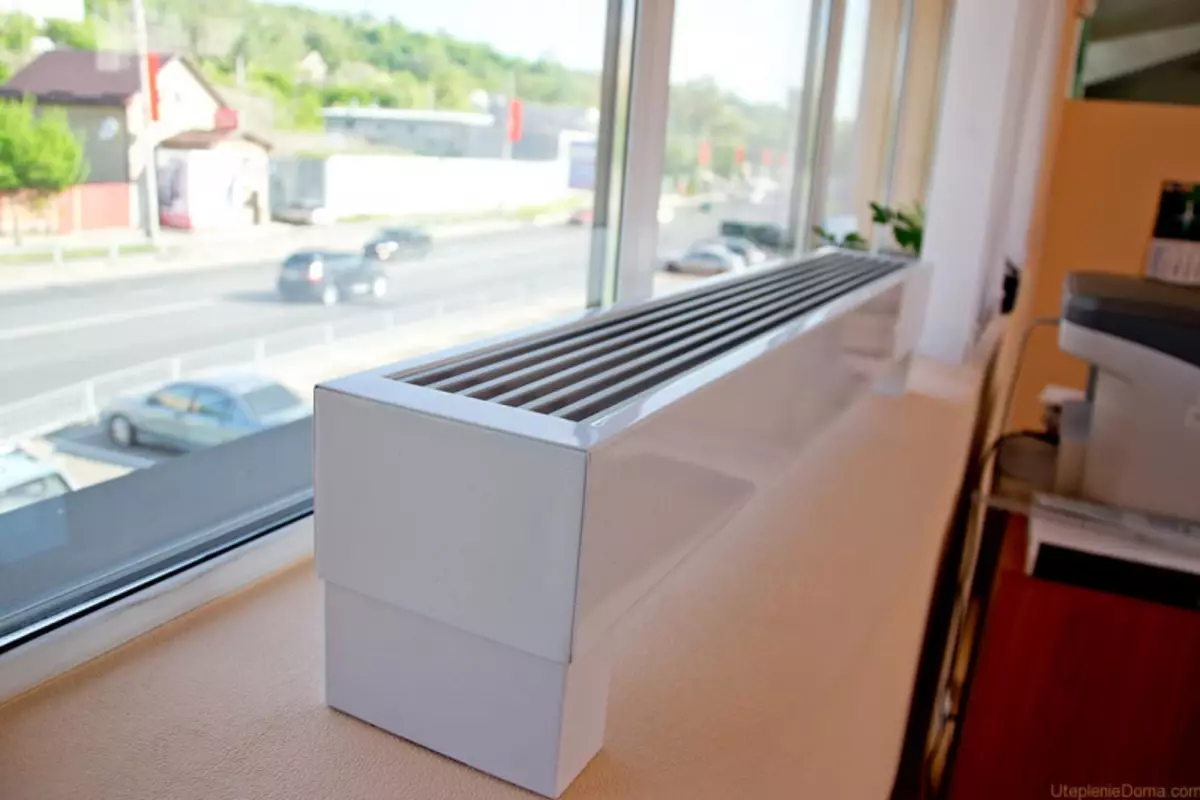
This provides a greater impact of heat, and increase the channel section inside the device with respect to the eyeliner. At the entrance to the device, chokes that cut the valves and thermal heads are installed.
The fins of such a device are performed from cheap aluminum, characterized by thermal conductivity of less than in copper, but more than in plates made of steel.

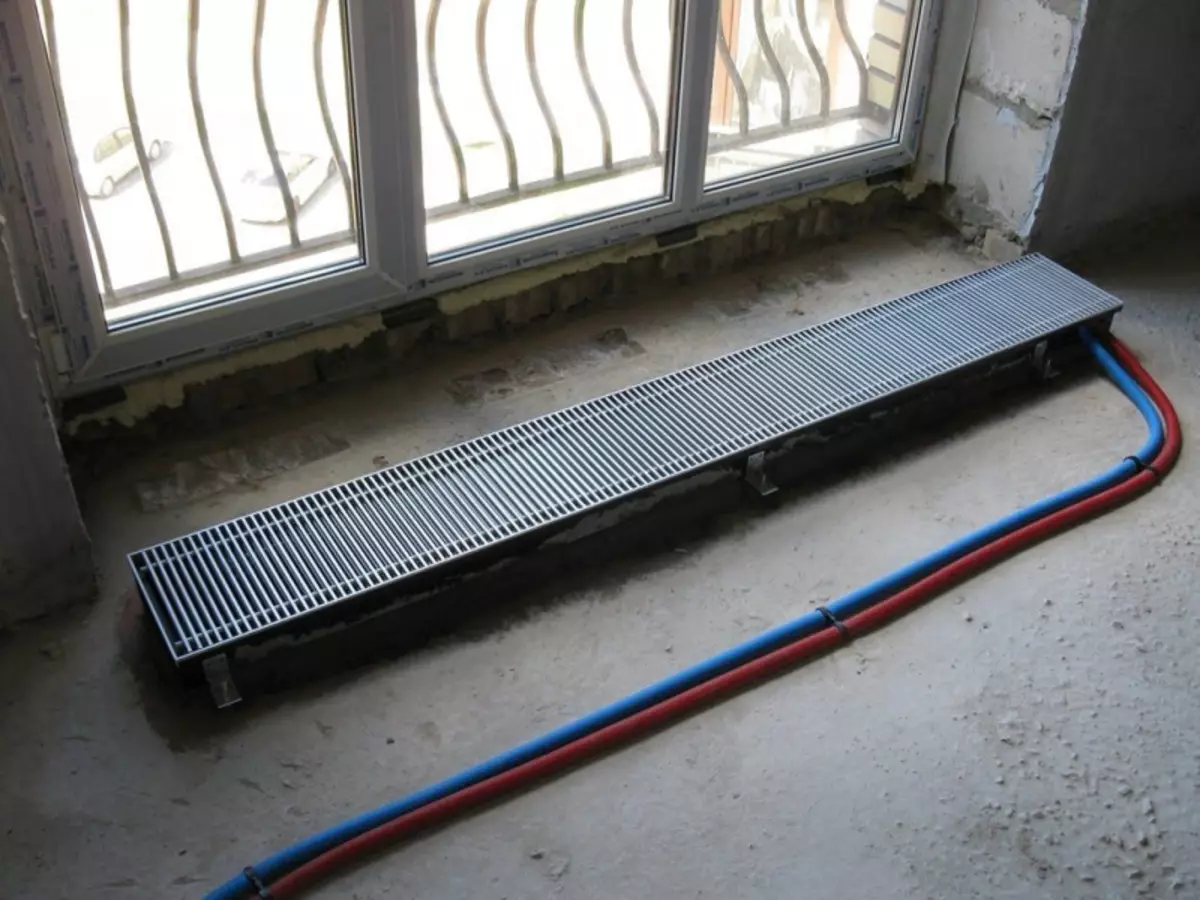
Aluminum ribs hide in the casing
Aluminum ribs of the heating device are not durable, therefore they conclude into a special casing, which serves as protection against damage, provides directional movement of the air flow and affects the design aesthetics.
Steel radiators are similar to aluminum-copper design, but differ with lower heat transfer. Devices made of steel can be:
- fully steel;
- tubular, in the manufacture of which is used by the property of material as corrosion resistance;
- Registers are often homemade units that are installed in country houses, and in other cases they are used for heating showcases in trading halls. For details on home heating, see this video:
Article on the topic: Instructions, how to fill the liquid floor with your own hands
Installation of outdoor radiators is quite simple and often does not require the participation of trained professionals. You only need to select the installation location and connect the device to the network.
